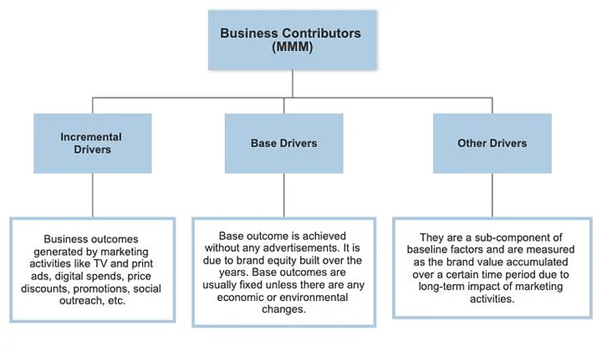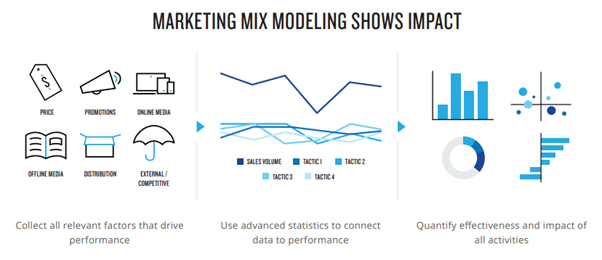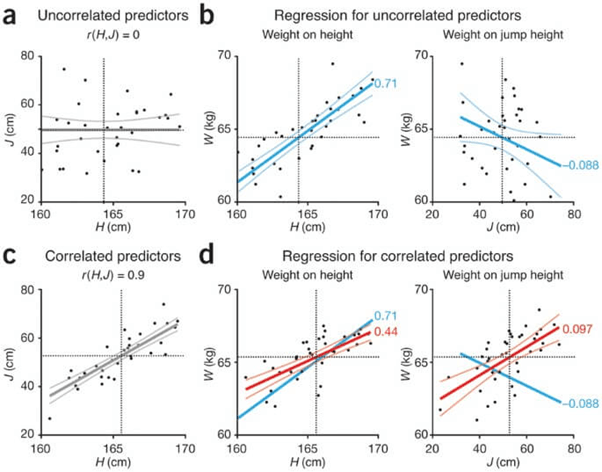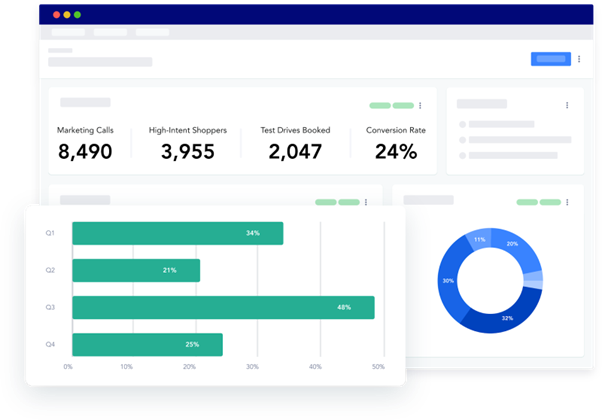
Sign up to receive latest insights & updates in technology, AI & data analytics, data science, & innovations from Polestar Analytics.
Editor’s Note: This article explores the power of Marketing Mix Modeling (MMM) Solutions for multi-channel retailers, highlighting how it helps optimize marketing budgets and measure the effectiveness of different channels. It covers key techniques like regression analysis and time series analysis, offering insights into improving ROI and decision-making through data-driven strategies.
Marketing is a crucial aspect of any business. Aside from driving brand value and promotion, marketing and sales often closely work together to drive more business, attract more customers, and ultimately increase revenue and growth.
However, marketers face the ongoing challenge of effectively allocating their fixed marketing budgets across a multitude of traditional and digital marketing channels. To accurately gauge the impact of each channel on sales, the development of robust marketing models becomes imperative.
But why is that? Is it because there is a scarcity of marketing channels? No, actually it is because of the abundance of them.
As Jay Baer, a noted marketing expert and scholar once said - "A successful marketing strategy is not about being everywhere, but about being where it matters most."
This is where Marketing Mix Modeling (MMM) plays a vital role. Companies are slowly realizing the importance of understanding the relationships between marketing inputs and their outcomes in terms of sales, market share, and customer behavior.
In this blog, we delve into the world of Marketing Mix Modeling (MMM), its impact on multi-channel retailers, impactful strategies and the techniques involved in making it work effectively. Let’s Dive.
Marketing Mix Modeling is a multi-step process that contains a series of unique steps that are driven by the marketing effects being analyzed. It serves as a bridge between parameters such as marketing spend and sales achieved, eventually improving the return on investment across marketing activities.
Marketing mix modeling works by segregating business metrics into parts to better analyze the marketing channels. It helps in distinguishing marketing and promotional activities i.e., incremental drivers from base and other drivers.
With an ideal MMM solution, you can measure the impact of individual marketing activities on revenues, volumes, and prices of products sold in the market.

In the era of seamless consumer experiences, multi-channel retailing has become the norm. Customers interact with brands through numerous touchpoints, transitioning effortlessly from physical stores to online platforms and social media. While this offers greater opportunities for engagement, it also poses a challenge in accurately assessing the impact of various marketing initiatives.
MMM addresses this challenge by providing a holistic view of marketing effectiveness across channels. It helps retailers allocate resources optimally, ensuring that marketing efforts are channeled towards the strategies that yield the highest return on investment (ROI). With the insights gained from MMM, multi-channel retailers can fine-tune their marketing strategies, striking the right balance between traditional and digital channels to create a seamless customer journey.

CMOs use marketing mix modeling to make data-based budget allocation decisions. The insights provided by the model allow them to divide limited resources efficiently and create a tangible impact on marketing channels that assures the highest return on investment (ROI). Here are the strategies to look out for:
1. Performs What-if-Analysis
Marketing Mix modeling allows CMOs to predict the potential revenue effects of the specified marketing actions and provides insights on which decisions are based. What-if analysis is all about providing businesses with insights into the potential consequences of implementing specific changes or strategies before actually executing them. By conducting these simulations, marketers can make more informed decisions and mitigate risks associated with untested initiatives.
2. Identifies Performance Drivers
Marketing mix modeling empowers businesses to identify what were the factors that made the particular campaign or channel successful. It can also be used to unravel the discrepancies and hurdles that may be hampering a particular campaign or channel. By analyzing historical data, marketers can pinpoint the marketing elements that have the greatest impact on sales and business outcomes. For example, a clothing retailer might discover that social media advertising and personalized email campaigns have a substantial influence on customer engagement and conversion rates, allowing them to focus their efforts on these high-performing channels.
3. Uncovering Synergies and Trade-offs
Marketing mix modeling reveals the interplay and trade-offs between different marketing variables. It helps businesses understand how changes in one aspect of the marketing mix might impact others. For example, increasing advertising expenditure may lead to higher sales, but at the expense of profit margins. This understanding of synergies and trade-offs allows businesses to make informed choices and strike a balance between short-term gains and long-term sustainability.
4. Quantifies Impact of Marketing Variables
Marketing mix modeling decomposes total revenue into base revenue and incremental revenue. It then identifies the factors affecting incremental revenue and quantifies their individual impact. It also compares the ROI for different channels in the marketing budget. Through statistical analysis techniques, marketing mix modeling measures the relationship between marketing variables and revenue. The model allows marketers to determine the extent to which each marketing element contributes to revenue growth.
| Data Collection and Integration: The foundation of a successful MMM lies in collecting and integrating data from various sources. This includes sales data, marketing expenses, and other relevant variables like economic indicators. For multi-channel retailers, this involves gathering data from in-store sales, e-commerce platforms, social media analytics, and more. | Attribution Modeling: Attribution is a crucial aspect of MMM. It involves attributing the impact of each marketing channel to the outcome. Different attribution models, such as first-touch, last-touch, or even algorithmic models, can be used to distribute credit to channels based on their role in the customer journey. |
| Time Series Analysis: Since marketing efforts and business outcomes are time-dependent, time series analysis is essential. This involves examining data over specific periods to identify patterns, trends, and seasonality. Multi-channel retailers must account for variations in consumer behavior across different times and seasons. | Regression Analysis: Regression analysis helps quantify the relationship between marketing inputs and outputs. It identifies how changes in one variable impact another, allowing retailers to understand the elasticity of demand in response to marketing activities. |
| Marketing Elasticities: Elasticity refers to the sensitivity of demand to changes in marketing variables. By calculating price elasticity, promotion elasticity, and cross-channel elasticities, multi-channel retailers can gauge the responsiveness of consumer behavior to different marketing strategies. | Testing and Validation: The effectiveness of MMM hinges on its ability to accurately predict outcomes. Retailers often use historical data to train their models and then validate them against actual outcomes. Regular testing ensures that the models remain accurate and up-to-date. |
While the need and impact of an effective MMM are unarguable, most marketers remain unsure of how to build a marketing mix model. Marketing mix modeling regression adopts multi-linear regression (MLR) principles to analyze and predict marketing patterns. Here are the most used marketing mix modeling techniques that help you assess your marketing channels.
Regression Models
Regression models are statistical tools that help identify the relationship between marketing inputs (e.g., advertising expenditure, pricing, promotions) and key performance metrics (e.g., sales, revenue).

Regression models act as a powerful magnifying glass that helps you zoom in on the individual impact of marketing ingredients. The model analyzes historical data, and crunch numbers, and reveals the hidden patterns that connect advertising spend, pricing strategies, and promotions to your sales and revenue.
Moreover, it also facilitates what-if-analysis to predict the impact of various marketing variables on revenues and allows companies to form an optimum mix. Despite the benefits it offers, regression models become difficult to manage with the increased complexity of marketing variables i.e., they cannot incorporate complex media interactions as it increases nonlinearities in the model.
Multiplicative regression models
Multiplicative regression models take the analysis a step further by considering the interactions and synergies between marketing variables. These models account for the fact that marketing inputs often work in combination rather than in isolation.

Multiplicative regression models are designed to get over the disadvantages of the linear model. They present reality more realistically because IDVs are multiplied together. These models offer a more realistic representation of reality than additive linear models do. Moreover, this model is particularly useful when interactions between marketing variables are more complex and nonlinear. It allows for a more nuanced understanding of how different marketing elements influence each other's effects on the outcome variable.
Hence, both these modeling techniques, whether regression or multiplicative regression, provide businesses with insights into how their marketing efforts impact sales and other key performance indicators. These insights guide informed decision-making and help optimize marketing strategies for better results.
At the end of the day, relying on data-led solutions is the logical way to gather reliable insights and predict market trends. Embrace the power of Marketing Mix Modeling Solutions MMM, for it's not just a tool; it's the compass guiding the future of multi-channel retailing.
So, if you also want to unravel future outcomes with predictive analytics, a trusted brand like Polestar Analytics could be the key that unlocks the door toward insightful decision-making.
About Author

Content Architect
The goal is to turn data into information, and information into insights.